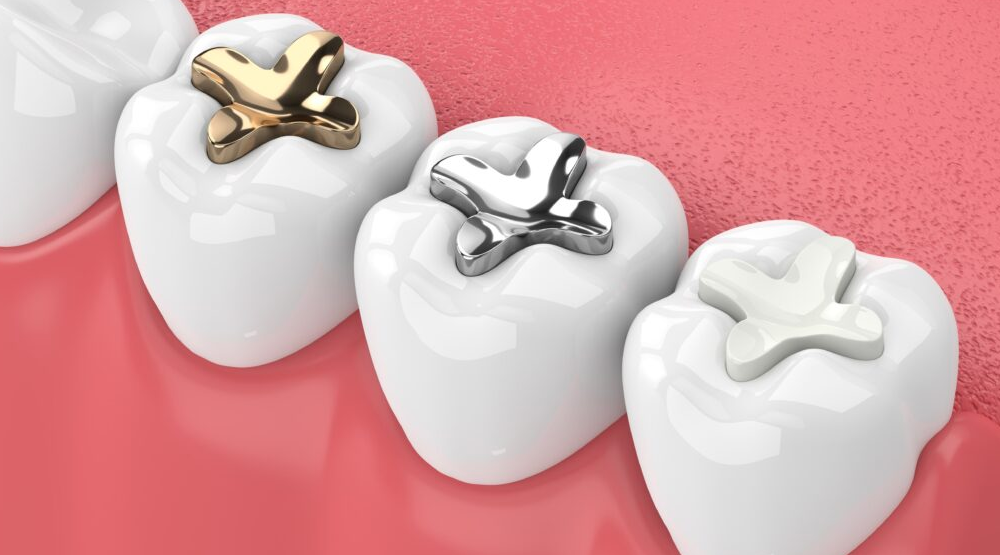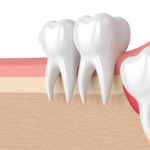
Tooth fillings can be made of a wide range of substances. Some of the most popular filling materials include:
- Gold
- Silver
- Porcelain
- Composite Resin
- Glass Ionomer
Generally, porcelain, gold, and silver amalgam fillings are the priciest materials, with tooth-colored composite resin being one of the most budget-friendly options.
To place this material, dentists first prepare the tooth. They’ll apply a numbing gel or ointment along the gumline, then clean the affected tooth. In many cases, the dentist may shave away small bits of the tooth.
This procedure allows the filling to fit snugly in the cavity. The cleaning portion helps prevent infections and further decay. Once the site is ready, the dentist will adhere the filling to the tooth.
Any excess material gets sanded away, leaving a smooth, filled tooth. The entire procedure is virtually painless, though patients may feel pressure as the filling is applied and fitted.
Most people won’t experience any pain at all after a cavity filling. However, the filling’s added pressure can agitate your gums and teeth, causing some mild pain.
How to Relieve Pain After a Cavity Filling
Post-filling aches are typically mild. But this pain can still make everyday tasks challenging. Luckily, there are quite a few ways you can dull pain after a cavity filling.
Don’t be surprised if your dentist doesn’t hand you a script for heavy-duty pain killers. Post-filling pain rarely requires prescription medications. Instead, they may recommend one of several homeopathic solutions.
Some of the most common home remedies and recommended treatments include:
- Over-the-counter pain medications
- Cold compresses placed against the cheek or jaw
- An analgesic ointment to numb acute areas of the mouth
- Using a toothpaste designed to lessen gum and tooth sensitivity
- Avoiding hot and cold foods for several days
The best option for you depends on your precise needs and preferences. For example, some individuals may be unable to take common over-the-counter pain relievers.
Nonsteroidal anti-inflammatory drugs (NSAIDs) like ibuprofen and aspirin can produce unpleasant side effects, particularly in those with liver disorders. Let your dentist know if you have sensitivities to NSAIDs.
Other short-term treatments, such as cold compresses or analgesic numbing ointments, could be the smarter option for sensitive patients. Avoiding hard, hot, and cold foods may also help reduce pain.
You may also want to consider switching your toothpaste for a short while. Whitening toothpaste may make your smile brighter, but it can irritate your gums and make your teeth more sensitive.
If your pain increases, becomes intense, or lasts for more than one week, you’ll need to contact your dentist and schedule an emergency appointment. Such symptoms aren’t typical and may indicate a more serious issue.
Preventing Future Cavities Is Crucial
Our diets contain far more sugar than they used to. Cavities are far more common today than ever before. Generally, getting a cavity filled is a painless procedure, but some post-filling pain isn’t unheard of.
In most cases, over-the-counter pain relievers can help you bear any pain after cavity filling. Still, routine dental is crucial to preventing cavities, and it can help eliminate dental aches and pains.







Leave a Reply